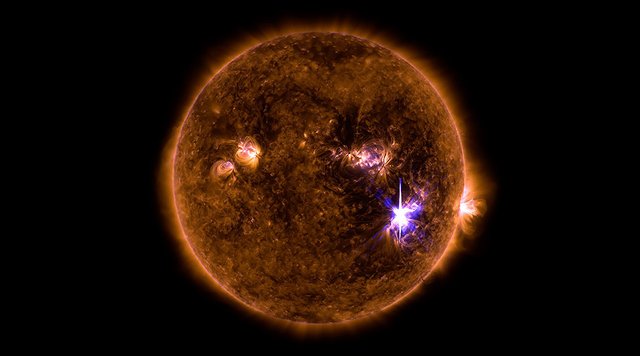A NASA satellite has captured footage of one of the most powerful solar flares ever recorded erupting from the surface of the Sun.
The flare was seen by the Hinode Telescope on the 10th of September and was powerful enough that it overwhelmed the satellite’s sensor, the first time such a phenomenon has occurred since 2003.The classification system for solar flares runs from ‘B’, ‘C’, ‘M’ and ‘X’ – ‘B’ being the weakest, 'X' is the strongest. Like the Richter scale for earthquakes, each letter represents a 10-fold increase in energy.

Read more - Space Station crew forced to seek shelter during massive solar flare
X-class flares occur when the Sun’s magnetic fields cross each other and reconnect, causing flares to appear as loops around 10 times the size of the Earth to burst from the surface.
When a solar flare reaches the Earth, mostly harmless ejections send electron and ion filled particle clouds into our atmosphere.
Flares are the cause of the natural phenomenon we call auroras, when the sky lights up in brilliant colors.
The most powerful flare ever recorded was in 2003, when the flare overloaded sensors measuring its strength.
The event was classed as an X-17, but it is estimated that it may have been closer to X-45.
Strong solar flares have potential to be much more disruptive: The most powerful flare known to hit the Earth was recorded in 1859. Known as the ‘Carrington Event’.
The phenomenon knocked out telegraph systems all over Europe and North America. The resulting auroras were said to have been so bright that they could be seen as far south as sub-Saharan Africa. Studying large flares such as the X-class is seen as key to understand why they erupt, and may ultimately lead to a system of predicting when they are about to happen.
The information in this article was sourced from: Read